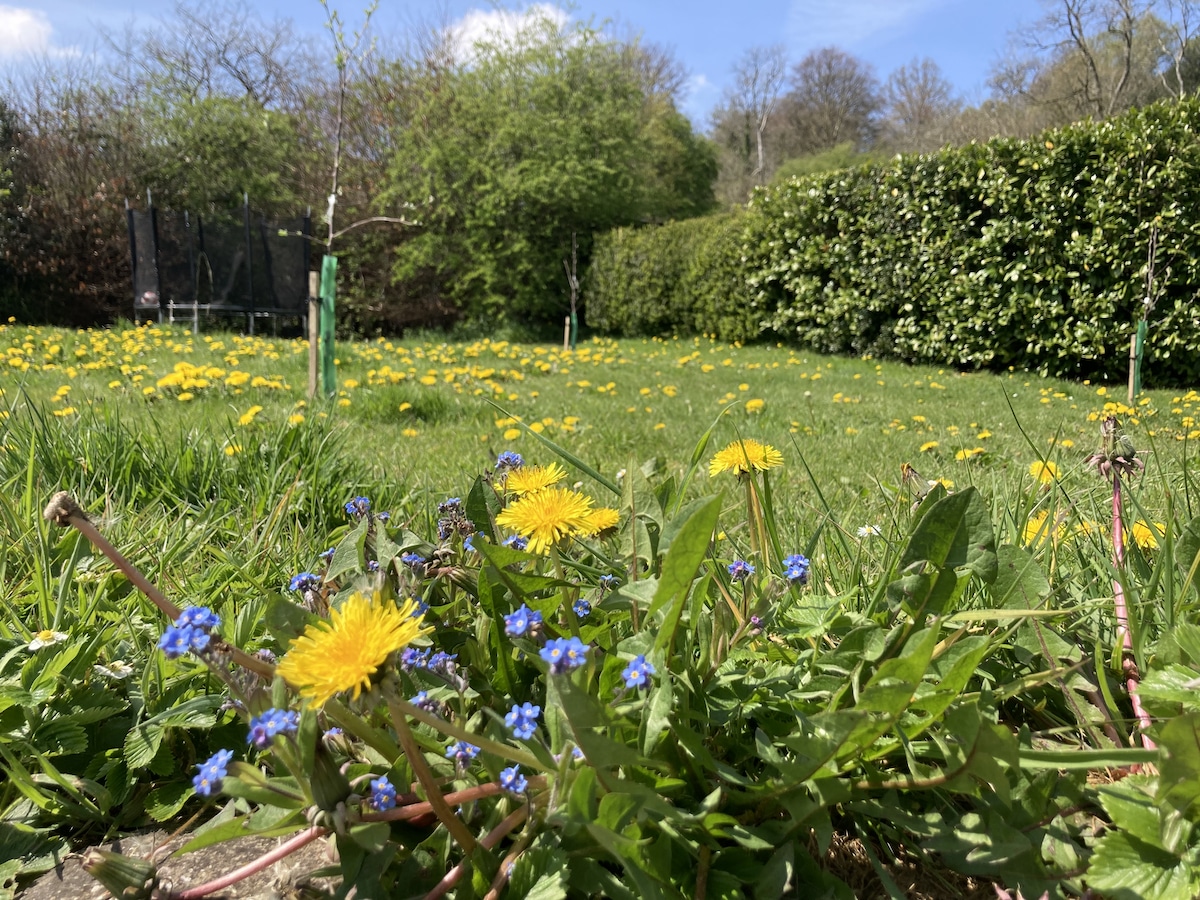Products You May Like
A wilder lawn. Archie Thomas / Plantlife
 Why you can trust us
Why you can trust us
Founded in 2005 as an Ohio-based environmental newspaper, EcoWatch is a digital platform dedicated to publishing quality, science-based content on environmental issues, causes, and solutions.
Mowing the lawn can be tedious, but people in the UK are being urged to let their grasses and gardens grow wild for an event called “No Mow May.”
Scientists from Plantlife, an international conservation charity, are requesting that people participate by not mowing their lawns for the entire month. The annual campaign helps native flowers and grasses thrive, in turn helping to benefit local insects and other creatures.
More From EcoWatch
“We’ve lost nearly 97% of flower rich meadows since the 1970s and with them gone are vital food needed by pollinators, like bees and butterflies,” the charity noted on its website.
By letting green spaces grow out, the plants provide food and shelter to wildlife and can better sequester carbon.
“With over 20 million gardens in the UK, even the smallest grassy patches add up to a significant proportion of our land which, if managed properly, can deliver enormous gains for nature, communities and the climate,” Plantlife continued.
According to Plantlife, lawns in the UK are cut up to 30 million times per year, equaling 45 million liters of fuel consumption and 80,000 metric tons of carbon emissions. Mowing less can promote biodiversity and allow plants to establish their roots, increasing carbon storage potential by up to 10%.
Those who let their landscapes grow freely this May could spot several different types of flora and fauna, from speckled wood butterflies and red-tailed bumble bees to daisies and creeping buttercup.
Further, property owners and managers will be lucky to spot one of the most common flowers, yellow rattle, growing. This wildflower (also known as ‘nature’s lawnmower’) is semi-parasitic and naturally reduces coarser grasses to allow other wildflowers to grow.
“Swerving mowing in May doesn’t only boost Spring wild flowers, it also allows people a little extra time to enjoy our glorious green spaces and connect with nature,” said Sarah Shuttleworth, senior ecological advisor for Plantlife. “This reclaimed time can be used to enjoy and explore wildlife friendly activities — like building a bug hotel, installing a wildlife pond or simply admiring the beauty of garden wildlife. From finches feeding on dandelion clocks to slowworms slithering in the sun there’s so much to marvel at in wilder gardens.”
While Plantlife, which is now in its fifth year of the No Mow May campaign, wants people to stop mowing in May, it still recommends moderation as an approach to lawn care after the campaign ends. Meadows can be maintained by mowing about twice a year, while flowering lawns can benefit from mowing about every 4 to 6 weeks. Property owners may also want to try establishing different zones of shorter and taller plants in their lawns, rather than sticking to a grass lawn that is mowed every week.
Subscribe to get exclusive updates in our daily newsletter!
By signing up, you agree to the Terms of Use and Privacy Policy & to receive electronic communications from EcoWatch Media Group, which may include marketing promotions, advertisements and sponsored content.
